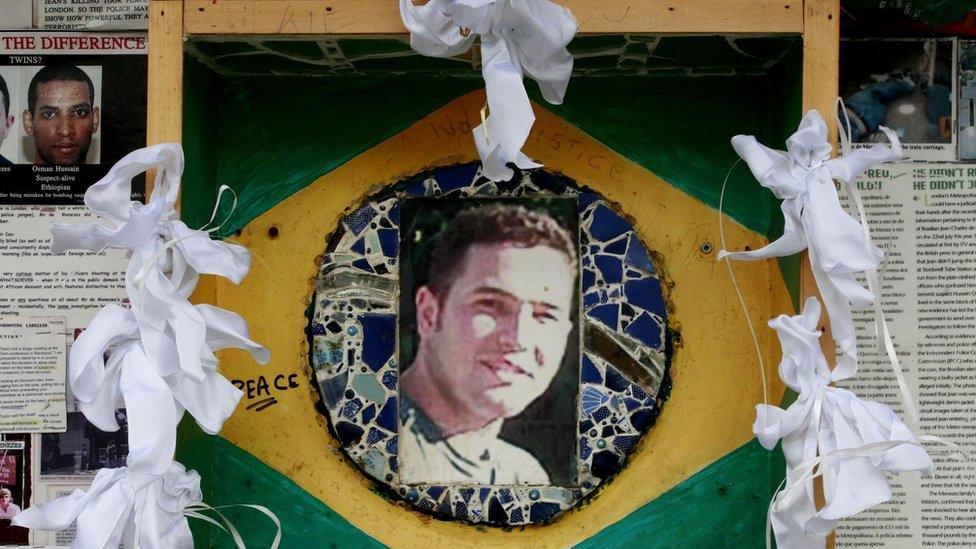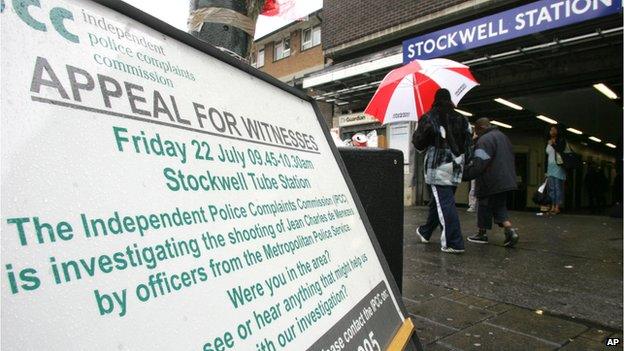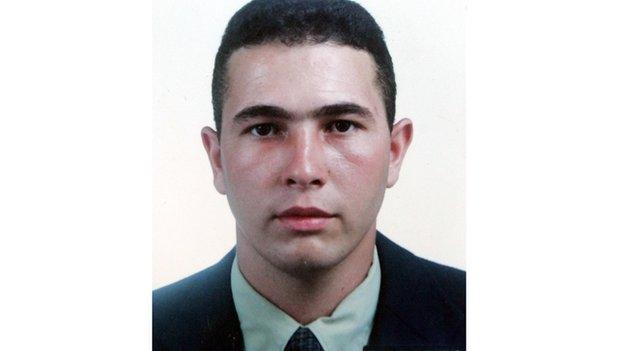Profile: Jean Charles de Menezes
- Published

Nearly a decade after the police shooting of Jean Charles de Menezes, his family have lost a case at the European Court of Human Rights over an attempt to see someone prosecuted over the 27-year-old's killing.
Mr Menezes, an electrician who was fatally shot at Stockwell Tube station in south London on 22 July 2005 by officers who mistook him for a suicide bomber, arrived in the UK from Brazil in 2002.
He had joined an estimated 60,000 to 100,000 Brazilians - including some relatives - in London and quickly learnt to speak English.
The son of bricklayer Matosinhos Otoni da Silva, Mr Menezes was born in the town of Gonzaga in the state of Minas Gerais - a source of many migrants to Europe and the US.
He spent his childhood living in an adobe hut in the town.
Mr Silva told BBC News his son had always wanted to be an electrician - as a child, he would make electrical toys with batteries, copper and matchboxes.
Mr Menezes moved to Sao Paulo to live with his uncle at the age of 14, attended high school and became a qualified electrician.
'Good money'
His father said Mr Menezes had always had a desire to move abroad to earn money.
"When he was a child he said: 'Father, I heard on the radio people make good money in England, the United States, France. If I have money to go, I will go. I will take advantage of my age and my energy to help you out.'"
About half of the young people from Gonzaga move abroad in the hope of securing a better future.
The Home Office said Mr Menezes had been granted entry to the UK for six months as a visitor on his arrival on 13 March 2002.
He then applied for leave to remain as a student, which was approved. He was granted leave to remain until 30 June 2003.
The Home Office says his visa expired at that time and that he remained illegally in the UK until his death.
Like many Brazilians in London, Mr Menezes would send money home to his parent's modest farm in Gonzaga.
"He didn't make a lot of money," his father said. "Most of his money went on rent and food.
"He wanted to stay for another two years to save money so he could come back and invest in a ranch."
He said his son was happy in London.

Police sign outside Stockwell Tube station after shooting on 22 July 2005
Friends say Mr Menezes was as shocked as all Londoners by the 7 July 2005 Tube and bus bombings, as well as the attempted London public transport attacks on Thursday 21 July - the day before he was shot.
Gésio César D'avila, a friend and colleague, said Mr Menezes had considered alternative transport after the failed attacks.
"We were together on Thursday, and when we saw what happened, Jean said he wanted to buy a motorbike to avoid the Tube," he said.
On 22 July, the day Mr Menezes was killed, police and soldiers had been watching the block of flats in Tulse Hill, where the electrician lived.
They believed Hussain Osman, one of the failed 21 July bombers, was living there. What they did not immediately realise was that the flats shared a communal entrance.
It is thought Mr Menezes left his flat, which he shared with cousins Vivian and Patricia, in order to fit a fire alarm.
Undercover police officers began following Mr Menezes because they thought he looked like Osman.
He took a bus to Stockwell station, where he boarded a train. There he was pinned down and shot seven times in the head and once in the shoulder by two officers trained in stopping suicide bombers.
Police were later to say the officers had feared for their own lives and for those of other passengers on the train.
Open verdict
In the days that followed the shooting, a makeshift memorial to Mr Menezes was set up outside Stockwell Tube station. The shrine of flowers, candles, pictures and newspaper articles became a gathering point for campaigners seeking answers over the incident.
Almost a year after his death, the Crown Prosecution Service announced that no officers would be prosecuted, but the Met Police would be tried for breaching health and safety laws.

A permanent memorial was unveiled on what would have been Mr Menezes 32nd birthday
On 1 November 2007, the force was found guilty at the Old Bailey of endangering the public over the operation that led to the shooting and fined £175,000 with £385,000 costs. A jury found the force broke health and safety laws when officers pursued Mr Menezes and shot him seven times
An inquest into Mr Menezes death began on 22 October 2008. The jury rejected the police account Mr de Menezes was killed lawfully by two officers and returned an open verdict. The coroner had instructed the jury not to return a verdict of unlawful killing, and gave it the choice of two possible verdicts.
The Met Police settled a damages claim with Mr Menezes family in 2009. The amount of compensation the family will receive was not disclosed.
In January 2010, Menezes family members and campaigners gathered at Stockwell station on what would have been his 32nd birthday to unveil a permanent memorial. A colourful mosaic framing a photograph of Mr Menezes was created by local artist Mary Edwards.
- Published10 June 2015
